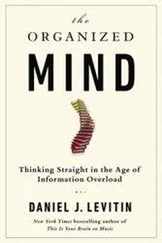Now that's just a hypothesis but to test this idea, we used the brain imaging technique called MEG or magnetoencephalography which allows you to see which parts of the brain light up when you touch different parts of the body, and sure enough what we found was in this patient, Victor, unlike the normal brain when you touch his face, it activated not only the face area in the brain but also activated the hand region of the Penfield map in the brain. So there has obviously been this cross-wiring in the brain of this patient. And this is important because it allows you to link changes in brain anatomy, changes in brain maps, in the sensory map, with phenomenology, allows you to link physiology and psychology which is one of the goals of cognitive neuroscience, this discipline we're talking about.
The discovery also has broader implications. One of the things we were all taught as medical students is that connections in the brain are laid down in the foetus or in early infancy, and once they are laid down, there is nothing much you can do to change these connections in the adult and that's why when there's damage to the nervous system as in a stroke, there is such little recovery of function and why neurological ailments are so notoriously difficult to treat. What I am saying is that's wrong. In fact there's a tremendous amount of plasticity or malleability even in the adult brain, and you can demonstrate this in a five minute experiment in a patient with a phantom limb. Now how you go about harnessing this ability in the clinic may be to help patients recover from stroke or indeed from phantom limb pain is a question that we don't have time to go into but we can take up during discussions.
OK so we have seen that after our arm amputation, the patient's brain gets cross-wired. The face input now innervates the hand region of the brain. Now that happens because of amputation. It turns out that the same thing can happen because of a mutation, if there is something wrong with your genes. Instead of the brain modules remaining segregated, you get this accidental cross-wiring and then you get a curious condition called synesthesia , which we have now been studying. This is going to be a topic of my lecture in Oxford. Briefly it was described by Francis Galton or clearly documented by him in the 19th century. He pointed out that some people who are perfectly normal in other respects have one peculiar symptom, if you want to call it a symptom, and that is these people who are otherwise completely normal, they get their senses mixed up and that is every time they hear a particular tone they see a particular colour. So C sharp is red, F sharp is blue. Another tone might be indigo, OK? And this phenomenon, this mingling of senses is synesthesia. Galton pointed out also that it runs in families. We and others have confirmed this, including Simon Baron-Cohen.
Now, another aspect of this syndrome is whenever you hear a particular tone you see a particular colour. Some of these people also when they see numbers in black and white, like the number five or the number six or the number seven, what we call Arabic numerals - Indian numerals strictly speaking - when you see these numbers, every time you see a number it evokes a particular colour so 5 is always red, 6 is always green. It's always tinged green. 7 is always indigo, 8 is always yellow, so this again is another example of synesthesia and it's very common. We find it's about one in two hundred people have this so it's not as rare as people have thought it to be in the past.
Now why does this happen? Why does this mixing of signals occur? Well we, a student of mine, Ed Hubbard and I were looking at brain atlases, brain maps and we were struck by the fact that if you look at the fusiform gyrus, that's where the colour information is analysed. But amazingly the number area of the brain which represents visual graphemes of numbers, 5 6 7 8 and all of that, is right next to it also in the fusiform gyrus, almost touching it. So we said this can't be a coincidence. Maybe in some people there is some accidental cross-wiring. Just as after amputation we get cross-wiring between the face and the hand, in these people maybe there's a cross-wiring between the number and colour area in the fusiform gyrus. Of course the key difference is in the case of phantom limbs, it's the amputation that causes the reorganisation whereas in synesthesia given that it runs in families, we think it's caused by a gene or a set of genes which causes abnormal connections between adjacent brain regions, in this case between numbers and colours so every time he sees a specific number it evokes a particular colour.
First of all many neurologists, neuroscientists in the past, even though the phenomenon was described by Galton a hundred years ago, it's been regarded mainly as a curiosity. It sounds crazy. They're just crazy or they're just faking it to draw attention to themselves, or maybe it's childhood memories. You played with refrigerator magnets, 5 was red, 6 was blue, 7 was green. Now it never made much sense to me because why does it then run in families? You have to say maybe the same magnets were passed round. So first thing we wanted to show this is a real phenomenon, it's the person genuinely sees red when he sees 5. It's not just imagination or memory. How do you show that?
So we devised a simple display on the computer screen, a number of 5s scattered on the screen, black 5s, just black and white. Embedded among those 5s are a number of 2s and these 2s form a shape like a triangle, a hidden shape, a triangle or a square. Now when all of us here, any one of us normals or less gifted individuals, looks at this pattern, you see nothing. But when a synesthete looks at it, who sees numbers as colour, he sees the 5s as red and the 2s as green so he looks at it and he says my god, instantly the 2s pop out and he says oh they're forming a triangle, they're forming a square. And they are much better at doing this than normal people so it's a clinical test for discovering synesthetes.
Now, the fact that synesthetes are actually better at this than normal people suggests that they can't be crazy. If they're crazy, how come they're better at it? So this shows this is a genuine sensory phenomenon. It also shows that it can't be memory association or something cognitive or a metaphor because - if that were true, how come he's able to see the triangle or the square pop out from the background? OK we have shown that this phenomenon is real, we in La Joya and as well as Jeffrey Gray and Mike Morgan and others here in London have done experiments to test the idea there's actual cross-wiring in the brain and have shown that in fact there's activation of the fusiform gyrus in the colour area just showing numbers to these people.
But then the next question is OK, here are some people with some quirk in the brain. They see numbers as colours so what's the big deal, why should I care? Well now I'm going to show you that you're all synesthetes but you're in denial about it. So what I want you to do is I want you all to imagine two shapes in front of you. I wish I had a slide but of course this is radio. One of them imagine is a shattered piece of glass with jagged edges, the other is like an amoeba, it's got undulating curvy shapes. And one of them I'm going to call a bouba, and the other is kiki - which is which? Now the amazing thing is 98% of people will pick the shattered piece of glass with the jagged edges, and say oh that's a kiki, and the undulating amoeboid shape, oh that's a bouba, even though they have never seen the shape before.
Why does this happen? Well I suggest it happens - I am going to talk about this in detail in my Oxford lecture - because you're all synesthetes.
Now we have talked about several syndromes, phantom limb, synesthesia, Capgras syndrome and these are quite bizarre and we have tried to explain it in terms of neural circuitry in the brain but there is a syndrome that is even more bizarre, and this is pain asymbolia. I'll tell you about a patient I saw in Vellore in India about ten years ago. He was quite normal, intellectually normal, mentally quite lucid, alert, attentive, his memory was normal, perception, everything was fine except I took a needle and pricked him with a needle to determine the intact, not to be sadistic but to determine the intactness of his pain pathways, to determine his pain sensations, and every time I poked him, of course, all of you here would say, ouch. He started giggling, telling me doctor, I feel the pain but it doesn't hurt. It feels very funny, like a tickle and he would start laughing uncontrollably.
Читать дальше











![John Bruce - The Lettsomian Lectures on Diseases and Disorders of the Heart and Arteries in Middle and Advanced Life [1900-1901]](/books/749387/john-bruce-the-lettsomian-lectures-on-diseases-and-disorders-of-the-heart-and-arteries-in-middle-and-advanced-life-1900-1901-thumb.webp)
